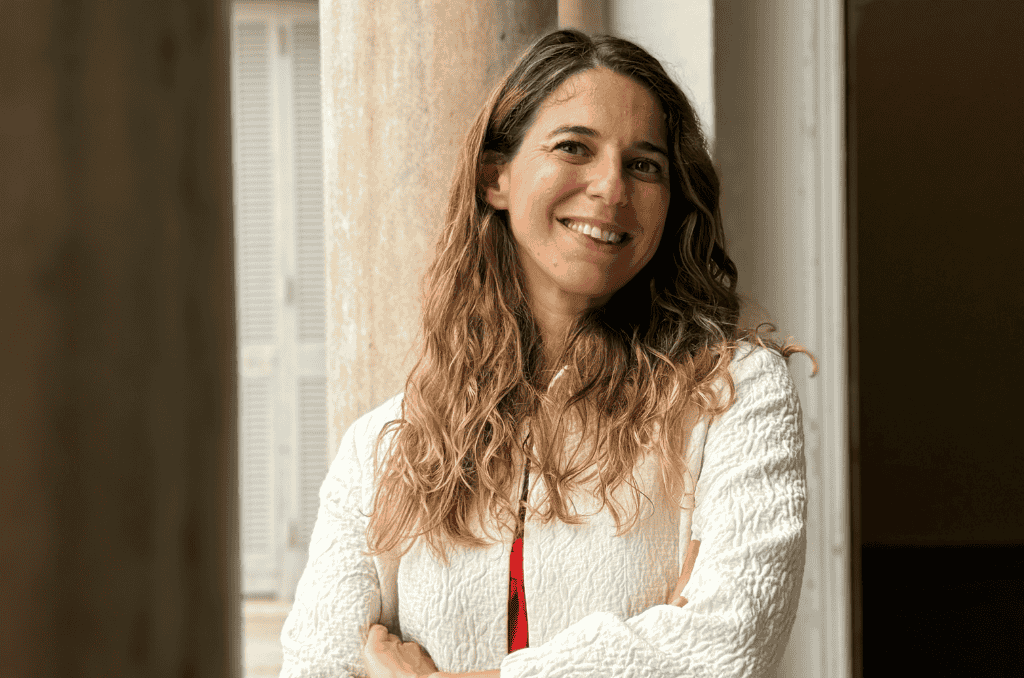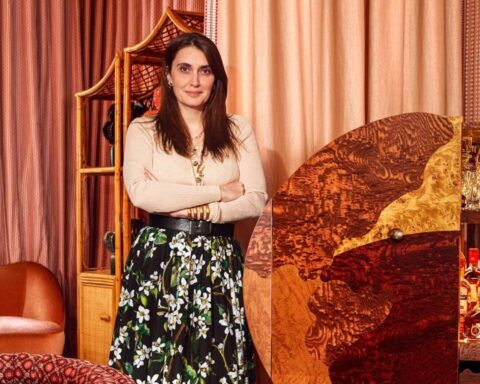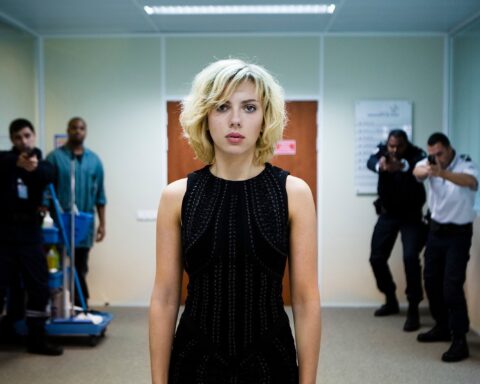On the occasion of the major antiques fair, FAB Paris, from November 22 to 27 at the Grand Palais – and for which we are partners – LUXUS MAGAZINE offers you this interview with Oriane Beaufils, curator of the Villa Ephrussi de Rothschild, which appeared in our last Autumn-Winter 2024 issue. FAB Paris will be the opportunity to see for the first time rare works of art that belonged to the Baroness and are usually jealously guarded in her seaside villa. Tickets can be won until November 15 on our Instagram page!
Oriane Beaufils spent four years working for the auction houses Sotheby’s and Christie’s. After eight years as curator of Renaissance paintings and decors at the Château de Fontainebleau, this architecture enthusiast was appointed curator of one of the most beautiful cultural sites on the Côte d’Azur last February: the Villa Ephrussi de Rothschild, located in Saint-Jean-Cap-Ferrat.
The Villa Ephrussi de Rothschild, with its 5,000 works of art, will be exhibiting some of its archives at FAB Paris. You’ve got until tomorrow, November 15, to win your tickets to FAB Paris via our Instagram competition.
This interview is taken from Luxus Magazine N°9, Autumn-Winter 2024.
LUXUS MAGAZINE: What does it mean to you to be appointed head of such a fine Maison, both architecturally and culturally?
Oriane Beaufils: I’m a Renaissance historian and I love architecture. I’ve always wanted to work in places that weren’t just museums, but places inhabited by architects, clients and materials, whether it be stone at Fontainebleau or cement at the Villa Ephrussi. The Villa Ephrussi de Rothschild is a catalog of Renaissance architectural forms. The southern façade is a Venetian palace, while the entrance is a church in the flamboyant Gothic style of Normandy. It’s also a Florentine church, reminiscent of certain Florentine fortified palaces.
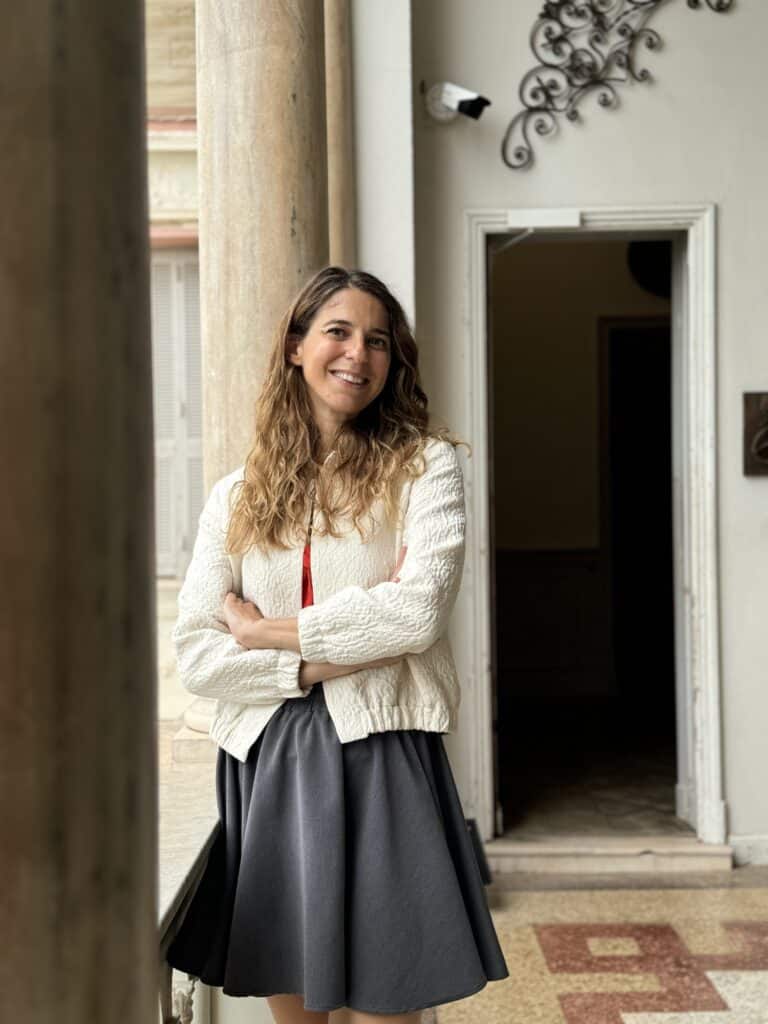
LUXUS MAGAZINE: How does this new position differ from your previous experience, even if it’s still in the field of culture and art?
Oriane Beaufils: This appointment represents a turning point in my career. After eight years at the Château de Fontainebleau, I was looking for a new challenge. The Villa Ephrussi de Rothschild will be taken over by the Académie des Beaux-Arts in 2023, so the relationship between public and private has really changed. The Villa now functions entirely as a public service, a mission in which I believe and which I serve. I’m very happy that there has been this change in governance. The Baroness de Rothschild bequeathed this villa to the Académie des Beaux-Arts in April 1934, and it was only right that the latter should take direct control of it. This appointment was first and foremost a new challenge, insofar as the villa had both the advantage and disadvantage of never having undergone a major restoration, either architecturally or in terms of its collections. Given the amount of work to be done, it promises to be a complex task, but also a formidable one, given all the objects that have remained intact and virtually untouched. In Fontainebleau, I worked in the castle of all the kings of France: 34 kings and 2 emperors, to be exact. Here, there’s only one person, a woman, who has decided everything. I like the idea of the coherence of a group.
LUXUS MAGAZINE: How would you define the Rothschild Taste, and what is its place today within the Villa Ephrussi and design in general?
Oriane Beaufils: The Villa Ephrussi and its collection symbolize the Rothschild Taste. On the outside, the Villa Ephrussi displays an architectural style on each façade, which is already very Rothschild in spirit. The Rothschilds were stockbrokers who settled on a street in Frankfurt’s Jewish ghetto: travel, and therefore the curiosity reflected in the building’s architecture, were part of their ethos. Inside, the Rothschild Taste consists of eclecticism, splendor and an abundance of objects, which goes hand in hand with the idea of important provenance. The Villa Ephrussi is home to a small painting of the Château de Fontainebleau, a fragment of a copy of the Grande Singerie from the Château de Chantilly, an urn belonging to Madame de Pompadour and diplomatic gifts in Sèvres porcelain… These are objects that have traveled, that have lived, a little like the messages or coins that the Rothschilds circulated in the 19th century, before they truly structured themselves as bankers. The Villa, as it stands today, is not necessarily fully representative of the Rothschild group, insofar as many objects have been placed in storage or are no longer on display. Nevertheless, its potential for “re-rothschildization” – i.e., exhibiting more objects in the rooms, associating them with each other in a decorator’s eye – is proving very significant. This is the case, for example, of French designer Eugène Lami, who worked on the Château de Ferrières and the Chantilly estate, among others. He staged all the objects in his buildings like a theatrical set. Over the years, the various Rothschilds have also commissioned decorators. For my part, I have tried to infuse this style and decorating taste, not only by enriching the Villa, but also by enlisting the help of experts and aesthetes such as Jacques Garcia, to restore the Villa’s interiors to their former splendor.
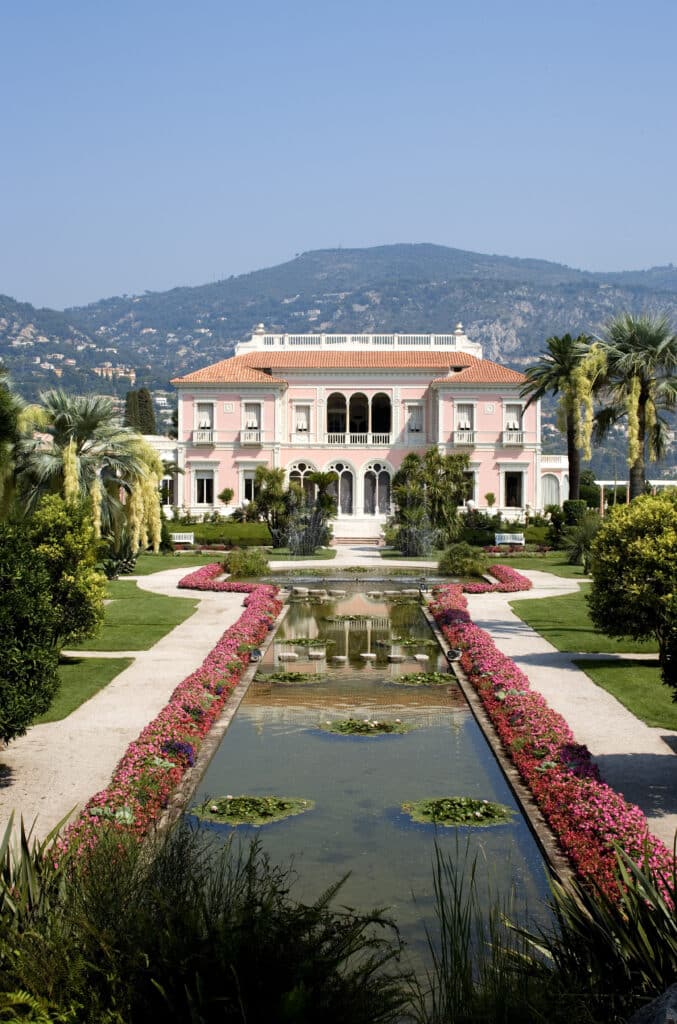
LUXUS MAGAZINE: Another challenge highlighted in the FAB Paris press release relates to the idea of joining an institution more famous than the works it houses…
Oriane Beaufils: The Villa Ephrussi is the only place in France where you can see the sea from all sides. The celestial blue of the Manufacture de Sèvres joins the azure of the sky and sea. For this reason, many sumptuous events have been organized here. But the pretty dress can sometimes be a disservice to the pretty lady: the exterior is so sumptuous that we sometimes don’t pay enough attention to the details of certain objects. My role and my aim is to make this collection known in its own right. It’s a seaside palace, but it’s much more than a panorama of the sea or an Instagramable place: each object has a meaning, a place and truly belongs to the great story. You called on Jacques Garcia for his expertise in the 18th century.
LUXUS MAGAZINE: What message do you hope to convey through your selection of works presented at FAB Paris?
Oriane Beaufils: Jacques Garcia knows the Rothschilds very well, having worked extensively in their residences. He has the eye for “abundance of good things does no harm”. For FAB Paris, we want to bring Beatrice de Rothschild’s collections back to Paris for the first time, where she had her private mansion. In fact, some of the collections on display at the Villa come from her Paris mansion. Jacques Garcia, both in places like the Domaine du Champ de Bataille and in his work at the Louvre’s Département des Objets d’art, has set the scene for the objects. Each one is an actor in a great play performed by taste. For FAB Paris, we want to stage a sort of miniature Villa Ephrussi with objects representative of the majesty of Rothschild taste. You’ll find some absolutely magnificent Sèvres and Meissen porcelain, as well as some extraordinary pieces of furniture such as Joseph Baumhauer’s chest of drawers in camomile lacquer. But also objects that are much more surprising, less immediately identifiable. The idea is to generate surprise, to astonish the visitor. When you enter the Villa, you discover this view and you’re surprised. I want you to be seized by the collections as you are by the place.
LUXUS MAGAZINE: How does the Rothschild taste, with its eclecticism of decoration across the ages and its dominance of the 18th century, manifest itself at the Villa Ephrussi? Can it also be found outside the Villa?
Oriane Beaufils: During the 20th century, there was a pronounced taste for minimalism, manifested in pared-down decorations and more sober colors, probably starting with the Art Deco movement. Yet the Rothschild taste was never lost. In Florentine art, a sort of exuberant vein appeared at the beginning of the 15th century and lasted until the 17th century, like a common thread running through the various artists. In the same way, there are representatives of the Rothschild taste throughout the twentieth and twenty-first centuries, which continues to this day. In Eugène Lami’s watercolors for the Château de Ferrière, as in the apartments of the Hôtel Lambert, we find this accumulation of objects, this abundance, this mix of styles, with comfort as the key value. The Rothschild taste is also the art of being at home and enjoying it. This notion is very important to the family. You can see it in the way they represent themselves, when you look at Connaissance des Arts magazines from the 60s, interviews with Marie-Hélène de Rothschild, Nadine de Rothschild and Liliane de Rothschild. I think that today, a renewed taste for decoration is emerging. Many young art dealers and decorators no longer work exclusively in galleries, but also use social networks. This reflects an increased pleasure in the aesthetics of objects and the visual surprise they provide. We’re seeing a return to the object, as well as a renewed interest in certain manual activities, such as tapestry and embroidery. We also note that the Manufacture des Gobelins today produces some quite innovative loom tombées. For example, an entire tapestry was produced at Aubusson on the theme of J.R.R Tolkien. So there’s a big comeback for arts and crafts, to which the public is very sensitive. This intangible heritage is invaluable, especially in France. The Rothschild taste is making a comeback, as is the taste for fine materials. One could say, somewhat provocatively, that everyone is fed up with Made in China, except when it comes to the Ming period.
LUXUS MAGAZINE: How did you come up with the idea of participating in the FAB Paris show, and what particularly attracted you to the opportunity?
Oriane Beaufils: Every year, the show names a guest of honor. I immediately saw a great opportunity for the Villa Ephrussi de Rothschild, insofar as it’s a place that’s in the process of undergoing a veritable renaissance, with a very fine but little-known collection. The Baroness was also a great collector, a friend to all the dealers, some of whom still exist. She belonged to the world of Salons such as the Biennale des Antiquaires, and went to the Galerie Georges Petit, which is, in a way, the FAB of the 1910-1920s. I love the spirit of FAB Paris, and found it worked wonderfully well with the Villa Ephrussi de Rothschild. As soon as I heard I’d been appointed to the Villa, I got in touch with FAB Paris and asked if they’d be interested in the Villa Ephrussi as a guest in 2024. And miraculously, they said yes!
LUXUS MAGAZINE: What preparations are underway at the Villa Ephrussi for 2025?
Oriane Beaufils: Since July 15, Villa Ephrussi has been offering evening events two nights a week, on Mondays and Tuesdays. These evenings include shows, mapping projections and a musical and artistic program featuring contemporary dancers and singers. The entire program is easily accessible online. We have also published the first guide to the Villa’s collections. It’s a first publication that provides a broad introduction to the history of the site and the Rothschilds, as well as some fifty objects. Finally, since mid-August, a small exhibition has been on display on the first floor of the Villa. It highlights the Villa’s architectural birth, based on archival plans, numerous architects’ blueprints and tracings illustrating the architectural genesis.
LUXUS MAGAZINE: You mention an international dimension. Is there a plan to take certain works across the Atlantic, for example?
Oriane Beaufils: Oceans, seas, mountains… The works at the Villa Ephrussi de Rothschild can travel, as can the Baroness herself. The Villa is called Île-de-France, probably in homage to the famous ocean liner. There are also plans for the collections to travel, particularly when renovation work is undertaken at the Villa Ephrussi. It’s all still in the planning stages. As soon as we know more, we’ll let you know!
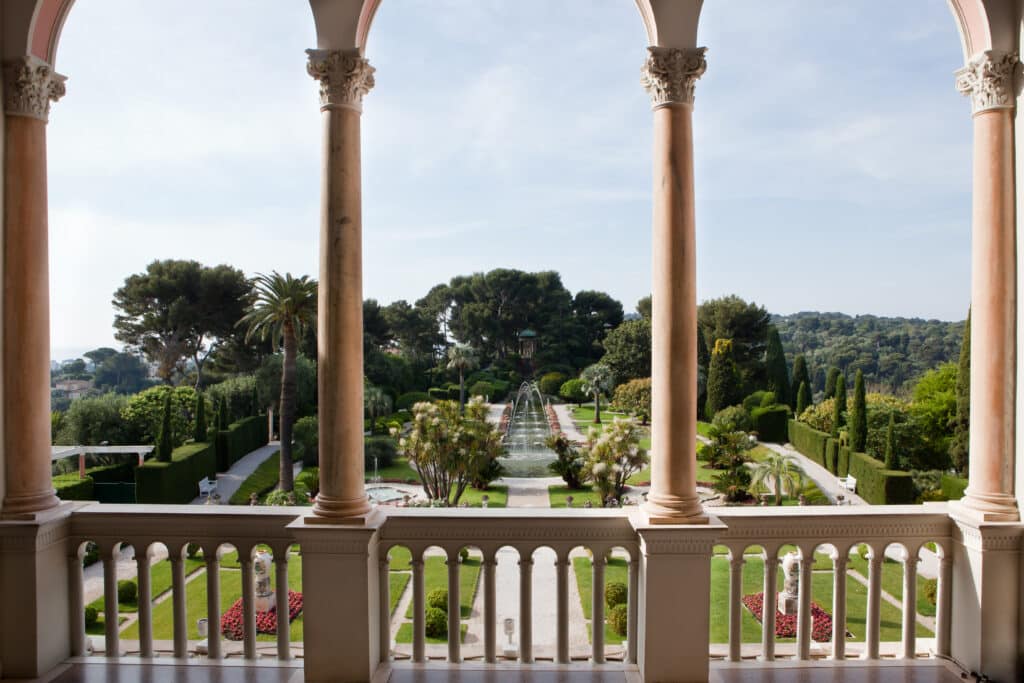
Read also > FAB Paris 2024: art and antiques meet at the Grand Palais
Front page photo: © Villa Ephrussi de Rothschild




